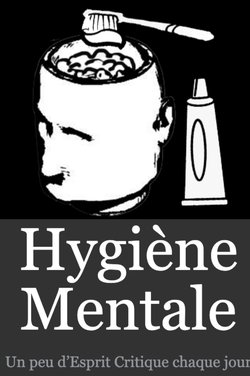- Lançamento original
- Episódio anterior S01E29 - Heysel et Hillsborough : que s'est-il passé ?
- Número S01E30
-
Links externos
Página de YouTube
-
Última atualização
3 juin 2024 - 21:32
em 11 bancos de dados -
En 5 niveaux de difficulté : comment fonctionne un banc de poissons ?
? Pensez à vous abonner et à activer la cloche pour ne pas rater mes futures vidéos ?
Pour soutenir la chaîne :
➡️ sur Tipeee : https://fr.tipeee.com/fouloscopie
➡️ sur KissKiss : https://www.kisskissbankbank.com/fr/projects/fouloscopie
Pour en savoir plus sur mes recherches :
➡️ Mon laboratoire de recherche à l’institut Max Planck : https://www.mpib-berlin.mpg.de/research/research-centers/adaptive-rationality
➡️ Ma thèse de doctorat : http://mehdimoussaid.com/TheseMoussaid.pdf
Enfin quelques références bibliographiques :
➡️ Niveau 1 :
– La description des configurations de nage dans les bancs de poissons :
Parrish, J. K., Viscido, S. V., & Grunbaum, D. (2002). Self-organized fish schools: an examination of emergent properties. The biological bulletin, 202(3), 296-305.
– L’hypothèse de la télépathie :
Selous, E. (1932)Thought Transference (or What ?) in Birds . Nature 129, 263
– À propos de l’effet Trafalgar :
Treherne, J. E., & Foster, W. A. (1981). Group transmission of predator avoidance behaviour in a marine insect: the Trafalgar effect. Animal Behaviour, 29(3), 911-917.
➡️ Niveau 2 :
– Le premier modele d’Aoki :
Ichiro AOKI, A Simulation Study on the Schooling Mechanism in Fish, NIPPON SUISAN GAKKAISHI, 1982, Volume 48, Issue 8, Pages 1081-1088
– Le modele de Craig Reynolds:
Reynolds, C. W. (1987, August). Flocks, herds and schools: A distributed behavioral model. In Proceedings of the 14th annual conference on Computer graphics and interactive techniques (pp. 25-34).
– L’article de Iain Couzin:
Couzin, I. D., Krause, J., James, R., Ruxton, G. D., & Franks, N. R. (2002). Collective memory and spatial sorting in animal groups. Journal of theoretical biology, 218(1), 1-11.
– Le simulateur en ligne que j’utilise est disponible ici :
https://www.complexity-explorables.org/explorables/flockn-roll/
➡️ Niveau 3 :
– L’étude sur le nombre d’influences dans les vols d’étourneaux :
Ballerini, M., Cabibbo, N., Candelier, R., Cavagna, A., Cisbani, E., Giardina, I., ... & Zdravkovic, V. (2008). Interaction ruling animal collective behavior depends on topological rather than metric distance: Evidence from a field study. Proceedings of the national academy of sciences, 105(4), 1232-1237.
➡️ Niveau 4 :
– L’étude de Iain Couzin sur les réseaux d’influence:
Rosenthal, S. B., Twomey, C. R., Hartnett, A. T., Wu, H. S., & Couzin, I. D. (2015). Revealing the hidden networks of interaction in mobile animal groups allows prediction of complex behavioral contagion. Proceedings of the National Academy of Sciences, 112(15), 4690-4695.
– La validation du modèle visuel :
Strandburg-Peshkin, A., Twomey, C. R., Bode, N. W., Kao, A. B., Katz, Y., Ioannou, C. C., ... & Couzin, I. D. (2013). Visual sensory networks and effective information transfer in animal groups. Current Biology, 23(17), R709-R711.
➡️ Niveau 5 :
– Les animations de spins sont extraites sur site https://toutestquantique.fr/ conduit notamment par l’excellent Julien Bobroff
– L’illustration de la temperature de Curie provient de la conférence de Hugo Duminil-Copin, ici : https://youtu.be/f__dFfsqKJI?si=mZVSrgqG3B7iccM5
– L’article fondateur de Tamas Vicsek sur le lien entre magnétisme et essaims d’animaux :
Vicsek, T., Czirók, A., Ben-Jacob, E., Cohen, I., & Shochet, O. (1995). Novel type of phase transition in a system of self-driven particles. Physical review letters, 75(6), 1226.
– L’article d’Andrea Cavagna et Giorgio Parisi sur la criticalité des vols d’étourneaux :
Cavagna, A., Cimarelli, A., Giardina, I., Parisi, G., Santagati, R., Stefanini, F., & Viale, M. (2010). Scale-free correlations in starling flocks. Proceedings of the National Academy of Sciences, 107(26), 11865-11870.


Episódios (32)
Séries similares (10)
 Hygiène Mentale
Hygiène Mentale































